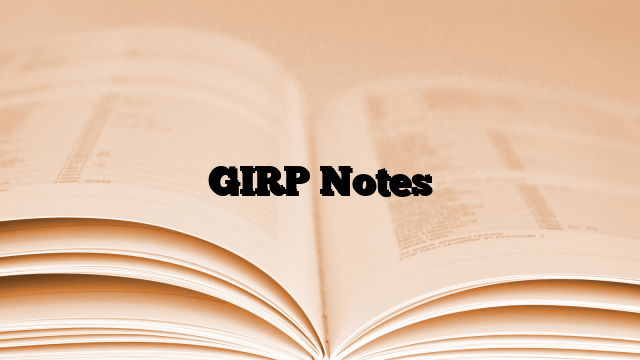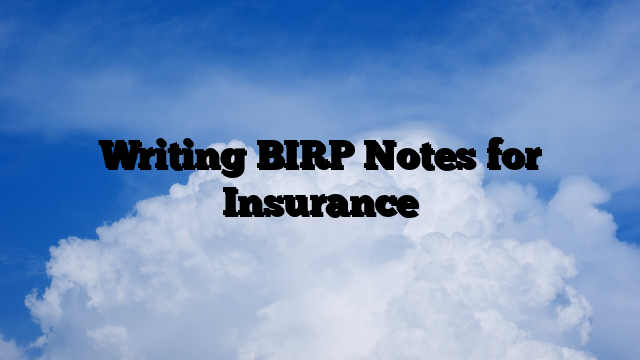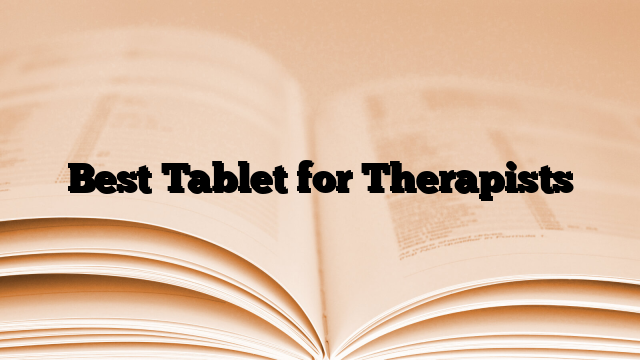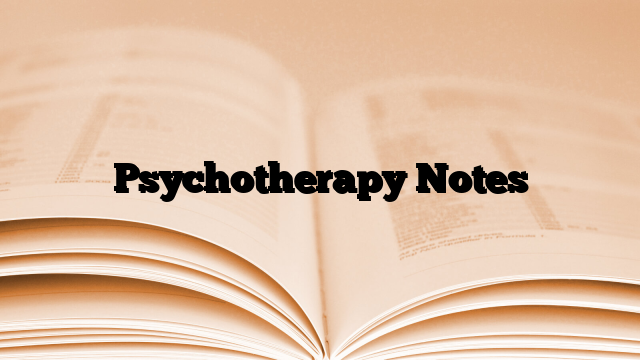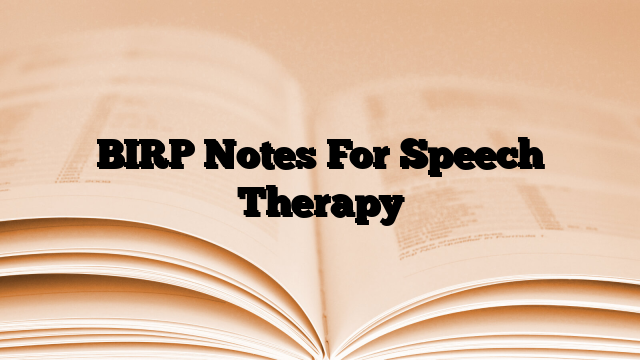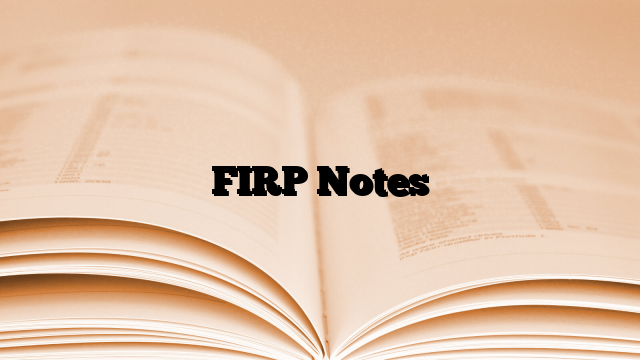When you’re in the thick of mental health practice, documentation is more than just paper-pushing—it’s a lifeline. One documentation style, the GIRP note, has become a staple for its straightforward approach. Today, let’s unwrap the layers of GIRP notes to see why they’re more than just paperwork; they’re a key player in effective therapy.
What GIRP Means Anyway?
GIRP means Goals, Interventions, Response, and Plan. This method structures a clinician’s observations and plans, making each note a clear map of the session’s journey. Here’s the breakdown:
- Goals: What are the objectives for this session?
- Interventions: What techniques were applied?
- Response: How did the client react?
- Plan: What are the next steps?
What is a GIRP Note?
GIRP note is a type of documentation used by mental health professionals to record the details of therapy sessions. This format helps maintain a focused and structured approach to both therapy and the documentation process, ensuring that each session builds on the previous ones and is aligned with the treatment objectives.
Goal (G)
The ‘Goal’ section outlines the objectives that the client and therapist have agreed upon. These goals are usually specific, measurable, attainable, relevant, and time-bound (SMART). Clearly stating the goals in the notes helps keep the therapy sessions directed towards tangible outcomes. It also provides a benchmark against which the therapist and the client can measure progress.
Intervention (i)
This part of the note describes the therapeutic techniques and strategies used during the session. Interventions might include cognitive-behavioral techniques, motivational interviewing, mindfulness practices, or any other method suitable for addressing the client’s specific issues. Documenting these interventions is crucial as it helps in understanding what approaches are being applied and how they are being integrated into the therapy.
Response (R)
The ‘Response’ section records the client’s reaction to the interventions used during the session. This might include the client’s emotional, behavioral, and cognitive responses. It is an essential part of the note as it provides insight into how effectively the interventions are helping the client and whether any adjustments need to be made. This feedback loop is vital for tailoring treatment to the client’s unique needs.
Plan (P)
The ‘Plan’ section outlines the next steps following the session. This could involve homework for the client, such as reading materials or exercises to practice before the next session. It might also include changes or continuations in therapeutic techniques based on the client’s response. The plan ensures that both the client and therapist have a clear understanding of the expected actions before the next meeting, maintaining momentum in the therapeutic process.
Benefits of GIRP Notes:
GIRP notes, used in mental health documentation, offer several benefits.
They help clinicians clearly outline and track the therapeutic process, from goals and interventions to client responses and future plans.
This structure supports effective communication among healthcare providers, ensuring continuity of care.
Also, GIRP notes enhance the therapist’s ability to evaluate treatment efficacy, adjust strategies, and support client progress systematically.
Overall, they contribute to more organized and goal-oriented therapy sessions.
The Real-World Impact of GIRP
By its design, a GIRP note does more than record; it acts as a strategic tool. It helps therapists track progress over time and adjust their strategies as needed. It’s about connecting dots, from initial assessment through to ongoing treatment, ensuring each session builds on the last.
Significance of GIRP Notes in Mental Health
GIRP notes are more than just a documentation tool; they serve as a roadmap for therapy. They help ensure that each session contributes to the overall treatment goals and provide a structured way for therapists to reflect on the effectiveness of their interventions. For clients, these notes can enhance understanding and engagement in the therapy process, as they see how each session builds upon the last towards achieving their personal goals.
GIRP notes are invaluable in multidisciplinary settings where multiple health professionals may be involved in a client’s care. These notes provide a clear and concise summary of each session, making it easier for the entire care team to stay informed and coordinate effectively.
How to Write GIRP Notes Faster and Better
Now let’s explore some strategies to write these notes faster without compromising quality.
Understand the GIRP Framework
Before diving into speed tips, it’s essential to understand the GIRP structure:
- Goal: What the client aims to achieve.
- Intervention: The methods or techniques used to help the client.
- Response: How the client responds to the intervention.
- Plan: The next steps or adjustments needed.
By internalizing this framework, you can quickly outline your notes, ensuring all critical elements are covered.
Use Templates
One of the best ways to speed up GIRP note writing is by using templates. Create a few customizable templates for different types of sessions (e.g., initial intake, follow-up, crisis intervention). This way, you have a foundation to start from, reducing the time spent on formatting and structure. Fill in the specific details for each client, making minor adjustments as needed.
Develop a Note-Taking System During Sessions
Taking brief, structured notes during the session can significantly reduce the time spent on documentation afterward. Use shorthand or bullet points to capture key points related to the GIRP framework. For example:
- Goal: Increase coping skills.
- Intervention: Taught deep breathing exercises.
- Response: Client felt more relaxed.
- Plan: Practice daily and review next session.
Having these points ready will make the actual writing process much faster.
Set a Time Limit
Give yourself a time limit for writing each note. This method forces you to focus and avoid overthinking. For example, set a timer for 10-15 minutes per note. Initially, this might seem challenging, but with practice, it will become easier, and you’ll notice a significant increase in your writing speed.
Focus on Conciseness
While it’s essential to be thorough, being overly detailed can slow you down. Aim for concise, clear sentences that convey the necessary information without extra fluff. Use straightforward language and avoid unnecessary jargon.
Make Use of Technology and AI
Consider using a GIRP notes software that can generate GIRP note using AI, a dictation software or voice-to-text tools. Speaking your notes can be faster than typing, especially if you’re comfortable verbalizing your thoughts. Also, some EHR systems offer features that can streamline note-taking, such as auto-complete and drop-down menus for common phrases and interventions.
Review and Refine
After writing, take a moment to review your notes for any errors or omissions. This final check should be quick since the main goal is to ensure completeness and accuracy. Over time, you’ll develop a rhythm that minimizes the need for extensive review.
Practice Regularly
Like any skill, writing GIRP notes quickly improves with practice. Regularly challenge yourself to write notes faster, and periodically assess your efficiency. Keep track of your progress and identify any recurring bottlenecks that you can address.
By implementing these strategies, you can significantly reduce the time spent on writing GIRP notes, freeing up more time to focus on client care. Remember, the goal is to be efficient without sacrificing the quality of your documentation. With practice and the right tools, you’ll find a balance that works for you.
Writing a Killer GIRP Note
To pen a note that’s actually useful, start with clarity. Keep your sentences short and to the point. Avoid technical jargon that could cloud the real achievements of a session. Remember, a good GIRP note should tell a story—one that any therapist could pick up and understand.
Here’s a tip: try injecting a little personality into your notes. While they need to be professional, a touch of human insight can paint a clearer picture of the client’s journey.
BIRP vs GIRP Notes
BIRP and GIRP both are structured notes formats used in clinical documentation for comprehensive and systematic recording of client information.
BIRP, which stands for Behavior, Intervention, Response, and Plan, focuses on documenting specific client behaviors, the interventions used by the clinician, the client’s responses to those interventions, and the future treatment plans. This method ensures that all aspects of a client’s treatment are meticulously recorded, which aids in monitoring progress and adjusting care as needed. The structured nature of BIRP notes helps clinicians maintain clarity and consistency in their records, facilitating effective communication among healthcare team members.
On the other hand, GIRP notes, which stand for Goal, Intervention, Response, and Plan, emphasize the client’s goals as the starting point for documentation. This format aligns the treatment process with the client’s aspirations, making it more person-centered. By focusing on goals first, clinicians can tailor interventions that directly contribute to achieving those goals, ensuring that care is aligned with what matters most to the client. The Response and Plan sections in GIRP notes serve similar purposes as in BIRP notes, documenting the client’s reactions to interventions and outlining future steps. This goal-oriented approach can enhance client motivation and engagement in their treatment journey.
Example of Good GIRP Notes
Client Name: John Doe
Session Date: May 18, 2024
Therapist: Dr. Jane Smith
Goal:
John’s treatment goal for this session was to develop strategies to manage his anxiety, particularly in social situations.
Intervention:
- Cognitive Behavioral Techniques: Discussed how to identify and challenge negative thought patterns that contribute to anxiety in social settings.
- Role-Playing: Conducted role-playing exercises to practice responses in social scenarios that typically trigger John’s anxiety.
- Relaxation Techniques: Introduced deep breathing exercises and progressive muscle relaxation to help John manage physical symptoms of anxiety during stressful situations.
Response:
John was initially hesitant but became more engaged as the session progressed. He was able to identify several irrational thoughts he often has before attending social events and expressed a willingness to challenge these thoughts in the future. He reported feeling relaxed after the breathing exercises and was surprised at the effectiveness of the muscle relaxation technique.
Plan:
- Homework Assignment: John will practice the breathing exercises daily and use them when he feels anxious.
- Next Session: We will review John’s experience with the breathing exercises and continue to work on cognitive restructuring and exposure to anxiety-provoking social situations.
- Long-Term Goal: Gradual exposure to more challenging social situations as John’s confidence grows.
Notes:
- Ensure confidentiality by using pseudonyms or initials instead of real names.
- Make sure the interventions are tailored to the client’s specific goals and needs.
- The response section should reflect the client’s actual reaction to the interventions during the session.
- The plan should include actionable steps for both the client and the therapist to address in future interactions.
GIRP Note Template
Client Information:
- Name:
- Date of Session:
- Time of Session:
- Therapist:
- Type of Session (e.g., individual, group):
Goal:
- Short-Term Goal:[Describe the specific objective the client is working toward during this session]
- Long-Term Goal:[Outline the broader therapeutic goals for the client]
Intervention:
- Techniques Used:[List the specific therapeutic techniques and interventions used during the session, such as CBT techniques, motivational interviewing, mindfulness exercises, etc.]
- Therapist’s Actions:[Detail the actions taken by the therapist to facilitate the client’s progress, such as providing psychoeducation, challenging irrational beliefs, etc.]
- Client’s Engagement:[Describe how the client engaged with the interventions, including any homework completed, participation in activities, etc.]
Response:
- Client’s Verbal Response:[Summarize the client’s verbal feedback and reactions during the session]
- Client’s Behavioral Response:[Observe and note the client’s non-verbal and behavioral responses to the interventions]
- Progress Indicators:[Note any signs of progress or lack thereof, such as changes in mood, insights gained, resistance, etc.]
Plan:
- Next Steps:[Outline what is planned for the next session or future interactions, including any homework to be completed by the client]
- Modifications:[If applicable, describe any changes to the therapeutic approach or goals based on the session’s outcomes]
- Follow-up:[Detail any follow-up actions needed, such as referrals to other services, coordination with other healthcare providers, etc.]
- Safety Plan:[If applicable, update or revise any safety plans in place for issues like suicidality or self-harm]
This template by BIRP Notes is designed to capture a detailed view of each session, facilitating effective documentation and ongoing care planning. Adjustments can be made to better fit specific therapeutic settings or client needs.
Now let’s get to the Conclusion
A GIRP note isn’t just a formality, it’s a cornerstone of effective therapy. Making notes that are clear, concise, and full of genuine insight can totally transform your clinical practice.
By keeping your notes sharp and focused, you make sure that they’re not just useful for regulatory purposes but are a beacon in the ongoing journey of client care.
Resources:
- Amy Marschall · 2023. Clinical Documentation with Children and Adolescents (Treatment, Risks, and Ethics) https://www.google.com/books/edition/Clinical_Documentation_with_Children_and/-nrJEAAAQBAJ
